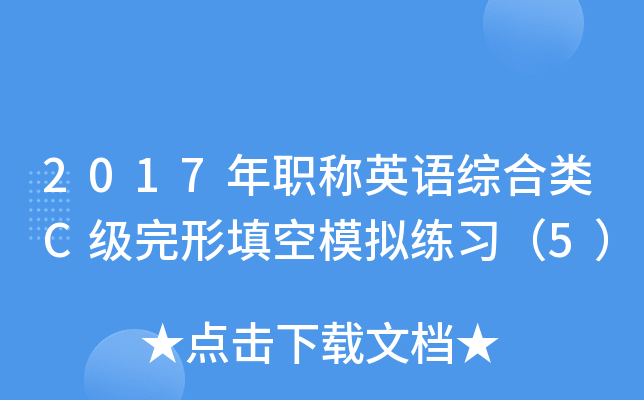Reform on the Road (C级)
Will the reform on the use of government cars really reduce office expenditure 1 this count? There are no reports 2 such an outcome although some local governments have moved in that direction.
Hangzhou government 3 its reform last month. Officials below the level of deputy bureau chief cannot use official cars for business trips. Instead they get subsidies between 300 and 2,600 yuan a month according to their administrative rank. This reform is supposed to save the government the money involving in __4__ a large number of cars.
Hangzhou in east China Zhejiang province is not the first to attempt __5.__ reform. Nanjing, capital of the neighboring Jiangsu province, did so five years ago. Yet there is no report available of how much money the Nanjing government has saved 6 these measures. All that we know about is. the fact 7 government officials get monthly subsidies for business trips.
The public have a right to 8 for transparency on the results of such reform 9 it is taxpayers' money that is being spent. Transparency is needed because people are 10 about policy, makers making policy against their own interests.
Obviously, the subsidies are not based on work needs. Lower level officials usually travel 11 than high-ranking officials. Therefore, the impact of reform appears to be diluted.
Transparency alone can tell us 12 the reform measures have indeed reduced government transport expenditure. If there is no disclosure of amounts saved by the reform, the public may have reason to suspect that the reform is actually a ploy 13 the income of officials in the form of a transport subsidy.
The way government cars are used needs to be reformed, The government spending on purchase of cars was 80 billion yuan in 2008, and use and maintenance amounts to around 300 billion yuan a year.
A study of ancient Chinese dynasties shows that the more reforms of the tax system, the heavier the taxes eventually 14 on subjects.
The only way to prevent this vicious cycles from happening with government car reform today is for the higher authorities to have a strict and 15 audit of local finance.
练习:
1. A) on B) in C) about D) to
2. A) indicates B) indicating C) indicated D) indicate
3. A) completed B) terminated C) launched D) finished
4. A) maintaining B) maintained C) maintenance D) maintain
5. A) such a B) as such C) such that D) such
6. A) by B) on C) through D) in
7. A) which B) whether C) in which D) that
8. A) providing B) offering C) supplying D) asking
9. A) because B) therefore C) because of D) thus
10. A) satisfied B) pleased C) skeptical D) confused
11. A) less B) more C) faster D) farther
12. A) how B) which C) that D) whether
13. A) increased B) to be increased C) to increase D) increase
14. A) levied B) taken C) consumed D) removed
15. A) opaque B) transparent C) obscure D) ambiguous
答案:ABCAA ADDAC BDCAB
进行中的改革
政府车辆使用的改革能够真正减少办公费用支出吗?虽然部分地区政府已经朝着改革的方向有所行动,但是,并没有报告显示支出减少这样的结果。
杭州政府上个月实施了改革。副局级以下官员不能将公务出差作为商业旅行。相反,他们每个月可以根据自己的行政级别取得300元到2,600元不等的补贴。这项改革的目的是让政府节省大量维护车辆的费用。
位于中国浙江省东部的杭州并不是第一个实施这类改革的地区。邻省江苏省的省会南京市在五年前就已经实施了。然而,却没有任何报告表明南京市政府通过这些措施节省了费用。政府官员每月可能有出差补助。
公众有权利要求此类改革有透明度,因为这些费用花的正是纳税人的钱。纳税入要求政策制定有透明度是因为担心决策者做出有悖于他们利益的事。
很明显,这些补助不是基于工作的需要。低级的公务员比高级公务员出差更多。因此,这项改革的作用似乎很小。
只有透明度能告诉我们这些改革措施是否的确降低了政府的交通费用。如果没有公开改革所节省的费用数目,那么,公众有理由怀疑这项改革只是官员用车补的形式提高自己收入的一种手段。政府车辆的使用需要改革。2008年,政府花费了些购车费用,并且一年的使用和维护费用也是较大的。
一项研究表明,税收政策的改革越多,税率也会发生相应的调整。现在,能够防些政府车辆改革发生恶性循环的方法就是更高级别政府机关能够对地方财政进行严格而透明的监管。


